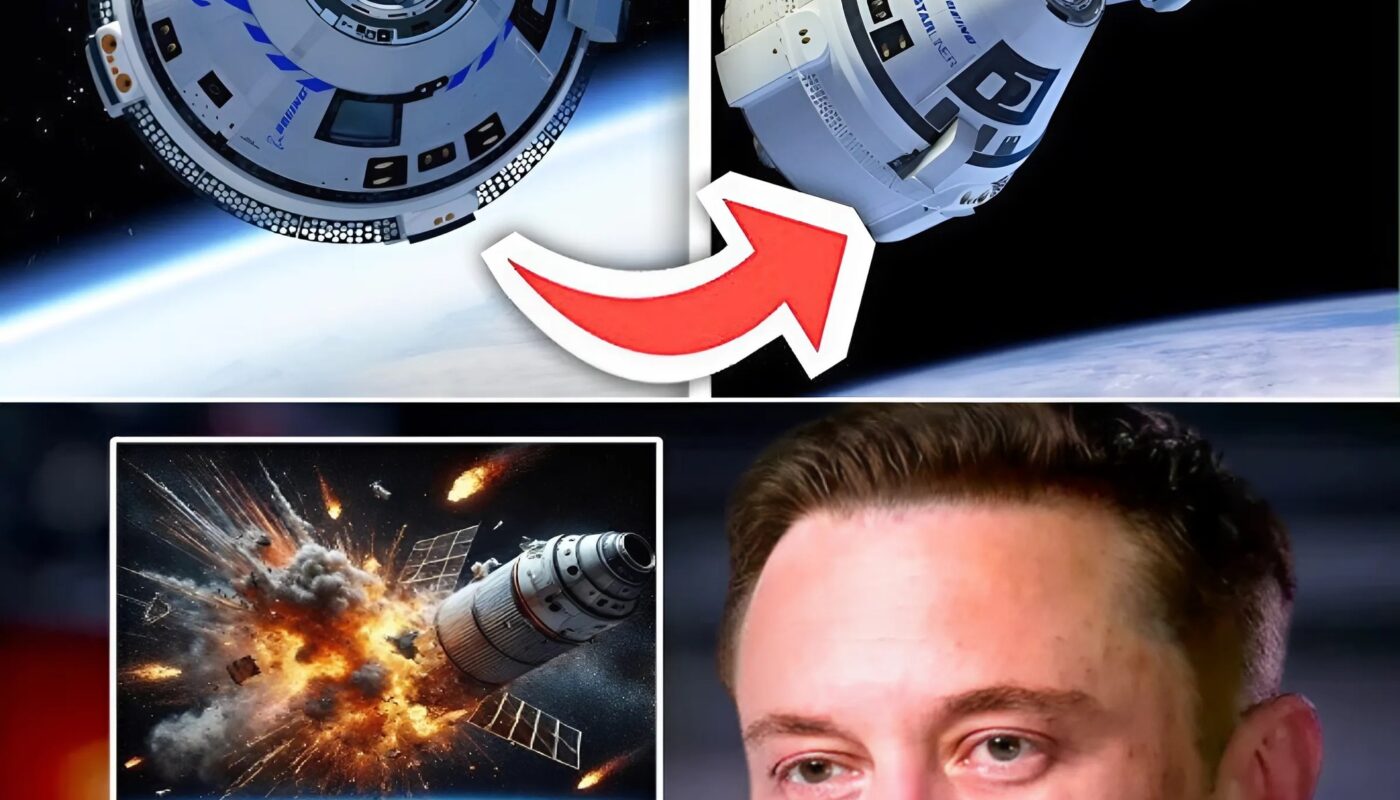Elon Musk: “The Boeing Starliner JUST OFFICIALLY EXPLODED!” I HO
For the fifth time, Boeing’s Starliner disappoints us again! This setback did not
shock the opinionated maverick and entrepreneur behind SpaceX Elon Musk. He
was right all along about the Boeing project! Will Musk come to the rescue? How
is he going to prove that SpaceX is the bigger company now in terms of
technology and space exploration domination? Let’s find out about these rivals in
the now-controversial world of spacecrafts!

In the highly competitive world of space exploration, every failure and success
reverberates widely, shaping the reputations of the companies involved. Boeing’s
Starliner program, once a promising venture, has become a stark symbol of the
company’s struggles in the modern era of aerospace innovation. Meanwhile, Elon
Musk and SpaceX continue to dominate headlines with their forward-thinking
approach and technological triumphs. In this context, Musk’s critique of Boeing’s
Starliner has sparked a debate that underscores the stark contrasts between
these two aerospace giants.
Boeing has long been synonymous with innovation in aerospace, contributing to
landmark projects like the Apollo program, the Space Shuttle, and the
International Space Station (ISS). However, the company’s reputation has suffered
significantly in recent years, particularly after the 1997 merger with McDonnell
Douglas. While this merger appeared strategic, it fundamentally changed Boeing’s
corporate culture, shifting its focus from engineering excellence to shareholder
profits and cost-cutting. This cultural shift laid the groundwork for a series of
high-profile failures, including the Starliner project.
The Starliner program, initiated in 2010 as part of NASA’s Commercial Crew
Program, was meant to symbolize Boeing’s continued leadership in human
spaceflight. However, the project has been plagued by delays, technical issues,
and public setbacks. Despite receiving a substantial $4.2 billion
contract—significantly more than SpaceX’s $2.6 billion for its Crew Dragon
spacecraft—Starliner has consistently failed to meet expectations.
The Starliner program’s challenges became evident during its uncrewed test flight
in December 2019. A fundamental software error caused the spacecraft’s mission
clock to misfire, leading it to consume excessive fuel and miss its intended orbit.
While the spacecraft returned to Earth safely, another critical software bug
discovered shortly before re-entry highlighted deeper issues in Boeing’s quality
assurance processes. These failures significantly tarnished Boeing’s reputation.

Subsequent attempts to launch Starliner have been marred by further issues,
including malfunctioning fuel valves, thruster malfunctions, and helium leaks.
Most recently, in June 2024, Starliner’s much-anticipated crewed test flight
encountered critical thruster failures shortly after reaching orbit. Despite heroic
efforts by engineers and astronauts to salvage the mission, the repeated setbacks
have underscored Boeing’s struggles to deliver a reliable spacecraft.
Elon Musk, the outspoken entrepreneur behind SpaceX, has not shied away from
criticizing Boeing’s struggles. Musk’s confidence in SpaceX’s approach has been
vindicated time and again, as the company has consistently outperformed
expectations. SpaceX’s Crew Dragon spacecraft, developed under the same
NASA program as Starliner, has successfully completed numerous crewed
missions to the ISS, restoring America’s ability to launch astronauts independently
for the first time since the Space Shuttle’s retirement.
The contrast between the two companies is stark. SpaceX’s culture emphasizes
innovation, rapid iteration, and learning from failure. Musk’s philosophy—that
failure is an opportunity for improvement rather than a catastrophe to be
avoided—has allowed SpaceX to develop cutting-edge technology at an
unprecedented pace. This stands in sharp contrast to Boeing’s more risk-averse
and hierarchical approach, which has struggled to adapt to the demands of
modern space exploration.
SpaceX’s success goes beyond Crew Dragon. The company has achieved a
series of groundbreaking milestones, including the first privately funded
spacecraft to dock with the ISS, the first reusable orbital rocket with the Falcon 9,
and the ongoing development of Starship—a fully reusable spacecraft designed
for missions to the Moon, Mars, and beyond. These achievements have
positioned SpaceX as NASA’s preferred partner for future crewed missions and
deep space exploration projects.

In comparison, Boeing’s Starliner project has become a cautionary tale of
overpromising and underdelivering. The repeated delays and technical failures
have not only damaged Boeing’s reputation but also strained its relationship with
NASA. The company’s inability to meet its contractual obligations has raised
questions about its role in the future of human spaceflight.
The fallout from Starliner’s struggles extends beyond Boeing’s corporate image.
For NASA, the delays have complicated its efforts to maintain a robust and
diverse human spaceflight program. While SpaceX has stepped up to fill the gap,
the agency’s reliance on a single provider for crewed missions introduces risks. A
successful Starliner program would have provided a valuable redundancy,
enhancing the resilience of NASA’s human spaceflight capabilities.
For Boeing, the stakes are even higher. The company’s credibility in the
aerospace sector has been severely undermined, and its ability to compete with
more agile and innovative companies like SpaceX is in question. The Starliner
fiasco has exposed systemic issues within Boeing’s corporate structure,
highlighting the dangers of prioritizing profits over engineering excellence.
Boeing now faces an uphill battle to restore its reputation and prove its relevance in the modern era of space
exploration. The company must address the cultural and structural issues that have hindered its ability to innovate and
deliver on ambitious projects. This will require a fundamental shift in priorities, placing engineering excellence and
accountability at the forefront of its operations.
Meanwhile, SpaceX continues to push the boundaries of what is possible in
space exploration. With ambitious plans for a human mission to Mars, a lunar
lander for NASA’s Artemis program, and a global satellite internet network via
Starlink, SpaceX is redefining the future of space travel. Elon Musk’s vision and
leadership have positioned the company as the undisputed leader in the
aerospace industry.
The story of Boeing’s Starliner program serves as a cautionary tale for
established companies struggling to adapt to a rapidly changing industry. It
highlights the importance of maintaining a strong engineering culture, embracing
innovation, and learning from failure. Conversely, SpaceX’s success demonstrates
the power of bold vision, agility, and a willingness to take risks.
As Elon Musk continues to challenge the status quo, his critique of Boeing
underscores a broader shift in the aerospace sector. The era of complacency is
over, and only those willing to innovate and evolve will thrive in the competitive
world of space exploration. Whether Boeing can rise to the challenge remains to
be seen, but one thing is clear: the future of space belongs to those who dare to
dream big.



